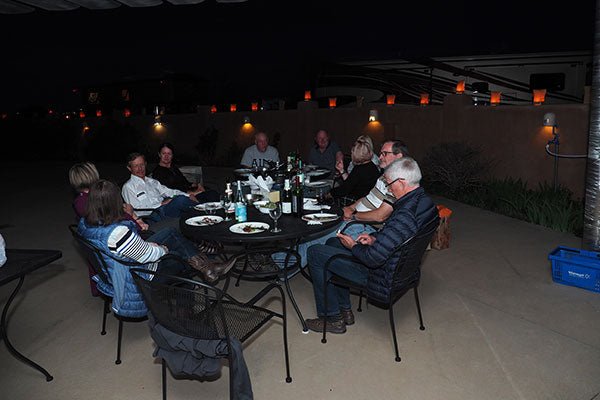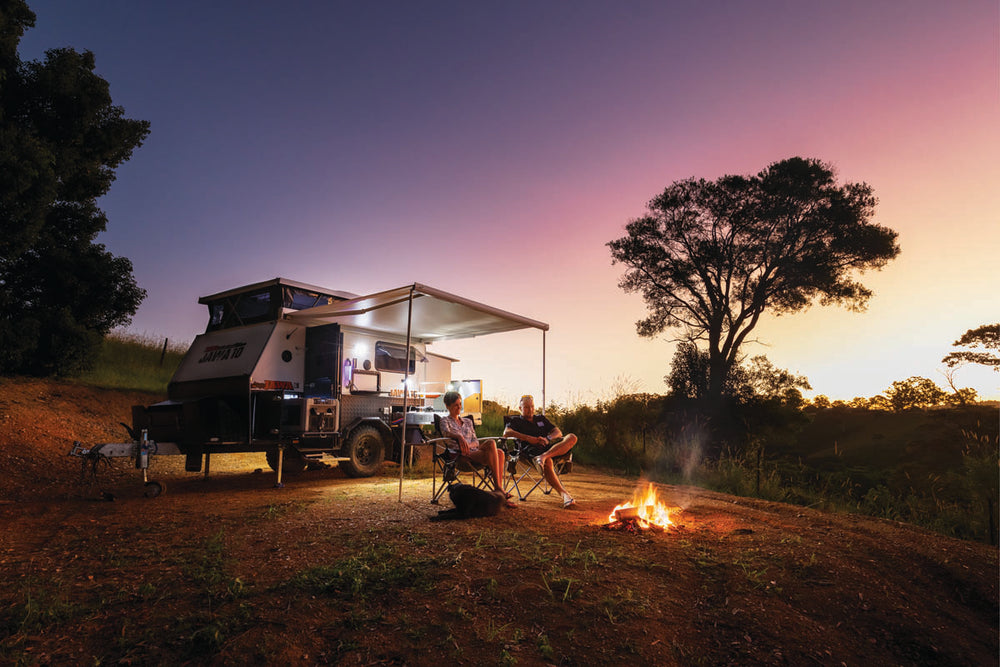Differences between Australian and American caravan parks

The late afternoon ‘Happy Hour’ is an institution around caravan parks, club rallies/musters and free-camping sites. It’s a time to sit back, relax after a hard day on the road and catch up with our fellow travellers.
Across the Tasman in New Zealand, there’s a similar tradition, with a slight variation in the caravan parks. Unlike Australia, a large majority of NZ parks have a camp kitchen of some sort – a communal place which comes with stoves, tables and chairs, and washing up facilities where it’s quite easy to prepare the evening meal and clean up afterwards. I’m a bit of a fan of these, even when staying in a fully-equipped motorhome, and obviously other travellers think so too, because they are often quite busy places. Although not exactly designed for social purposes, a caravan park amenities block operates that way in a fashion too, especially during peak periods.
All of the above is something that most of us take for granted and I had not really thought much about it until a recent trip travelling along Route 66 in the USA. We were travelling with four other couples all in motorhomes. Just about every afternoon, we’d enjoy a ‘Happy Hour’ get-together, even on the occasional wet days, when we would all squeeze into one motorhome – US motorhomes are somewhat larger than our Aussie equivalents.
About halfway through the trip it became clear to us we were doing something a little unusual, because we seemed to be attracting the attention of some of the other RV park residents and a few stopped by for a chat.
US RV parks are a little different to Australian ones. For a start, in all the ones we stayed in, the RV sites, usually larger than ours, were designed for a ‘full hook’ (i.e. mains electrics, town water connection, dump point outlet and, in many places, cable TV). The other point of note is that although we were travelling in an 8m (26ft) motorhome called a Minnie Winnie, it was frequently one of the smallest motorhomes in the RV park. As a consequence, most RV park travellers, once parked and hooked up, seemed never to venture outside their motorhome/caravan/fifth wheelers. Although many RV parks did have amenities blocks, they were often quite small compared to the size of the RV park and not used much. All up, there were few people seen to be just wandering around or outside their rigs.
The one exception to this was the Sante Fe Skies RV Park in Sante Fe. It not only had a camp kitchen but a communal entertainment/barbecue area and a decent-sized amenities block. On our two-night stay, we made full use of the kitchen/barbecue facilities and, somewhat to our surprise, on the second night, we were joined by the RV park owner at our evening barbecue. He was pleased to see the full use being made of his park infrastructure and was keen to learn all about where we were from. A little surprise in this park was seeing a house truck, something I thought only existed in New Zealand.
Lest you think that Americans were less than friendly, that was certainly not the case. In more than one small town, we were spoken to by strangers interested in where we were from, how long we were staying in town and pointing out the local attractions. I would also imagine that at many RV club get-togethers, ‘Happy Hour’ happens in some way.
INTERNATIONAL RVS
Upon my return to Australia, the first thing on my agenda was the NSW Caravan, Camping & Holiday Supershow. After that was over, I realised that, during the past couple of months, I had unintentionally managed to check out the New Zealand and, by default, European RV scene (Auckland motorhome/caravan show), US RV scene (motorhome road trip plus visit to the Winnebago factory) and what was happening in Australia.
Here’s the rudimentary score sheet. The USA does quite well in the large, spacious and very cheap categories but not so well in the overweight, lack of technology and efficient use of space categories. Australia and New Zealand both do quite well in the technology, size and fuel-efficient categories but are, undoubtedly, the most expensive by quite a margin. The Europeans are winners in the effective use of space and pricing categories but not so much if a spacious interior is desired. One obvious difference between the US and everyone else was that many US motorhomes are powered by fuel-sucking 6.8L, V10 petrol engines but just about everyone else opts for fuel-efficient turbodiesels! Which would you choose?
The full feature appears in Caravan World #564. Subscribe today for the latest caravan reviews and news every month!







